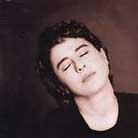| September 1998
by David Sherman
This question is in part answered on Salerno-Sonnenberg’s latest CD on Nonesuch entitled Humoresque, a grab bag of pieces recorded over the course of 1997 in the US and in England. Most notable are the tracks composed and arranged in the 1940s by the great Hollywood composer Franz Waxman for the Warner Brothers classic film Humoresque starring John Garfield and Joan Crawford. The film score was also one of the early commercial triumphs of the young violinist Isaac Stern. Sections of Waxman’s score have been re-recorded here by Salerno-Sonnenberg, probably the ideal performer for the job. Here is the romance, the pyrotechnics, and the raw-boned emotion for which Salerno-Sonnenberg is so well known, without the grimaces and gyrations of the performer. The choice of recording these particular works provides a welcomed respite from the romantic warhorses that are all too common in her repertoire. She plays Waxman’s compositions to the hilt -- showing us in no uncertain terms that this Hollywood score is not fluff. There are a few down sides to this CD. On John Musto’s able arrangement of Cole Porter’s "You Do Something To Me," Salerno-Sonnenberg plays some beautifully scored phrases around the bland vocals of Judy Blazer. The romantic violin lines seem out of place in a Cole Porter song, even though the piece is played with dazzling arpeggios and a lot of sex appeal. Salerno-Sonnenberg’s performance of Gershwin’s "Embraceable You," although technically good, falls flat due to an apparent lack of understanding of popular or jazz phrasing. In this Russell Warren arrangement, she is asked to emulate the kind of phrasing and note bending that one expects to hear in a popular recording of the 1930s or ‘40s. Unfortunately that kind of sound is missing here. Another misstep is Ms. Blazer’s performance of Cole Porter’s "What Is This Thing Called Love" as a solo. Russell Warner’s brooding arrangement, while played well by pianist Leslie Stifelman, is sadly out of place on this CD. Ms. Blazer sings with little emotion or phrasing; moods are expressed only with changes of volume. Also puzzling are the two versions of Antonin Dvorak’s Humoresque which create bookends on this recording. The first is the Franz Waxman arrangement for violin and orchestra, and the second his arrangement for violin and piano. One would have sufficed, and my preference would be the former. To round out the CD, Ms. Salerno-Sonnenberg recorded the Presto from Bach’s First Violin Sonata in G Minor, and the First Movement of Lalo’s Symphonie espagnole. Here in the familiar waters of Bach and Lalo, she does her best work. The Bach is studied and refined, with only a few glimpses of the firebrand violinist, most notably in the various rubatos she performs throughout the piece. And the Lalo is emotional but never frenetic. Salerno-Sonnenberg tends to lean heavily on accented low notes, creating a disconcerting rattle from her instrument. But this is just part of the package of this exciting musician. Engineering worked to enhance the sound of Salerno-Sonnenberg’s instrument. The use of reverb is tasteful, creating the sonic image of a large hall without overdoing it. The violin’s tone was usually round and warm, with intermittent passages sounding strained and raspy which would attest to good microphone placement and minimal use of EQ -- always desirable in recording acoustic instruments. Salerno-Sonnenberg teams up with old friend and school-mate Andrew Litton, who conducts the London Symphony Orchestra for the orchestral tracks in Studio One of the famed Abbey Road Studios in London. The orchestra seems not to find its own dynamic on this recording. The brass are mixed too crisply, and too much "glitter" was added to their high end. This made for very unusual timbres for the low brass notes, especially for those passages marked forte. The rest of the orchestra sounds one-dimensional -- an engineering decision which, to my ears, defeats the excellent job Mr. Litton does of leading the musicians through treacherous waters like the Waxman composition "City Montage." Nadia Salerno-Sonnenberg is slowly evolving. The rebel in many of us tends to mellow as we reach our 40s, and the same is obviously happening to Ms. Salerno-Sonnenberg. Leaving behind the Sturm und Drang of the romantic repertoire for this CD was a good decision. This is an enjoyable recording by one of America’s most gifted soloists. GO BACK TO: |
 Nadja Salerno-Sonnenberg - Humoresque
Nadja Salerno-Sonnenberg - Humoresque![[Reviewed on CD]](../format/regcd.gif) Can a
reviewer separate the musical performance of violinist
Nadia Salerno-Sonnenberg from the sheer physical effort
that she puts forth? Is the perception of the artist as a
rebel inescapable? A concert critic must take into
account the theatrics for which Ms. Salerno-Sonnenberg is
well known. Take away the physicality of the performance
and what is left?
Can a
reviewer separate the musical performance of violinist
Nadia Salerno-Sonnenberg from the sheer physical effort
that she puts forth? Is the perception of the artist as a
rebel inescapable? A concert critic must take into
account the theatrics for which Ms. Salerno-Sonnenberg is
well known. Take away the physicality of the performance
and what is left?